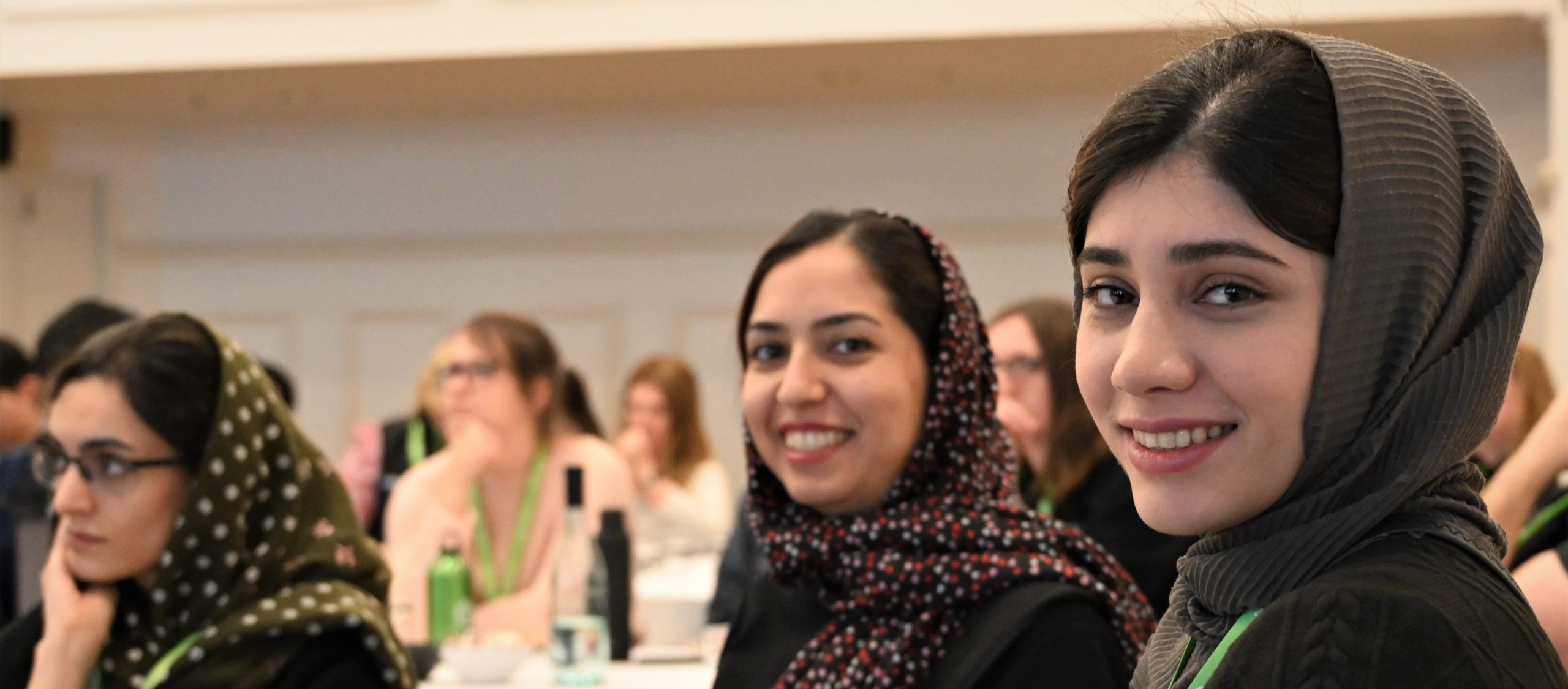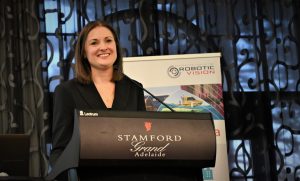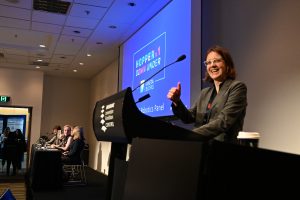Gender Diversity

The Centre continues to implement its Robotic Vision Gender Equity Plan to encourage and support our researchers and actively work towards correcting gender imbalances in computer science and engineering.
Gender Diversity
The Women in STEM Decadal Plan from the Australian Academy of Science was released in 2019 and is the output of a large and diverse expert working group. Key findings from the report include that the need for STEM-trained people will continue to grow nationally; that Australia cannot meet national needs without increasing the number of women involved in STEM; that barriers exist for women at all levels of schooling and the workforce; and that responsibility for remedy must be shared by government, academia, industry, education sector and the community. 47.5% of Australia’s workforce is female yet only 16% of our STEM-skilled workforce is female.
Gender imbalances are acute in computer science and only slightly better in engineering. It is still a huge issue facing our Centre, and one our Centre Director Peter Corke encourages all Centre members to be part of the solution.
We continue to pursue ways to redress this including featuring key reports and resources in our monthly Centre News; implementing Gender-based KPI targets (below); and addressing unconscious bias in advertising when recruiting for research fellows and PhD researchers. We also engaged external consultants, Gender Matters, to help us investigate other ways to build gender diversity in our field.
In October 2017, at our annual RoboVis symposium, the Centre launched a Robotic Vision Gender Equity Plan. This plan incorporates feedback from across the Centre, in addition to the recommendations from the Gender Matters’ report. A copy of our Robotic Vision Gender Equity Plan can be downloaded from the Centre’s website. In 2020, the Centre is partnering with Diversity Council Australia (DCA) an independent not-for-profit peak body leading diversity and inclusion in the workplace to further inform the Centre in what we can do to shift the balance in the right direction.
In 2019 we welcomed:
- Chief Operating Officer Katrina Tune
- Associate Investigator Professor Elizabeth Croft became our first female Chief Investigator
- Associate Investigators Professor Dana Kulić and Dr Hanna Kurniawati
- Research Fellow Dr Fatemeh Saleh
- PhD researchers Vibhavari Dasagi and Aimee Allen.
We have set significant stretch targets of 50% female representation at our RoboVis symposium scheduled for November 2020 across delegates, speakers and session chairs.
Gender Diversity Performance Measures
Gender Diversity – Positions
Gender & Diversity Events
One of the key opportunities identified in the Women in STEM Decadel Plan is visibility: you can’t be what you can’t see. Roles models are extremely important and the value they hold for aspiring STEM professionals cannot be underestimated. Concrete steps need to be taken to improve the representation of women in all areas, and at all levels of government, organisations, and in the community.
RoboVis 2019, Guest speaker: Dr Michelle Perugini
The Centre  was extremely fortunate to have keynote speaker Dr Michelle Perugini join us at our RoboVis symposium and talk about her experience as an entrepreneur, academic and an internationally renowned expert in health, medical research, advanced analytics, and cognitive AI.
was extremely fortunate to have keynote speaker Dr Michelle Perugini join us at our RoboVis symposium and talk about her experience as an entrepreneur, academic and an internationally renowned expert in health, medical research, advanced analytics, and cognitive AI.
In 2007 Michelle co-founded the innovative start-up ISD Analytics where she led the research and development, and commercialisation, of its award-winning human-population behaviour predictive analytics software product Simulait. ISD Analytics was acquired by Ernst & Young (EY) in 2015 and became one of EY’s global suite of analytics products.
Michelle is now working with, and mentoring, various innovative technology start-ups and is a co-founder of Presagen and Life Whisperer. Life Whisperer uses Artificial Intelligence (AI) to better identify healthy embryos for IVF, and to ultimately improve outcomes for couples wanting to have children. Michelle’s talk was the highlight of our symposium and led to a very engaged question and answer session with our group.
Hopper Down Under
 Increasing the attendance and involvement of women in public events and conferences is critical to increasing female representation and presents key opportunities for career development.
Increasing the attendance and involvement of women in public events and conferences is critical to increasing female representation and presents key opportunities for career development.
Brisbane hosted the inaugural Hopper Down Under in July. It was a celebration of diversity in technology in the Asia-Pacific, and the sister event of the Grace Hopper celebration, the world’s largest gathering of women technologists. It brought together women technologists at all levels, from undergraduate to CEO, along with members from industry leading companies, academia, and research, to build relationships, learn, and advance their careers. The event aimed to build community; strengthen our collective, diverse voices; promote inclusion; and inspire action.
Hopper Down Under was an initiative of the Centre led by former Centre Chief Operating Officer Sue Keay, who travelled to Houston to meet with AnitaB.org in September 2018, inviting the organisation to establish an annual event in Australia. Hopper Down Under has already expanded to cover the Asia-Pacific region, and the 2019 program featured Chief Investigator Professor Elizabeth Croft, Associate Investigator Dana Kulić and Research Fellow Nicole Robinson.